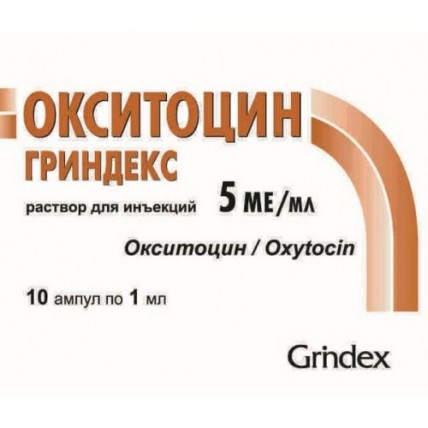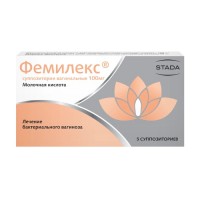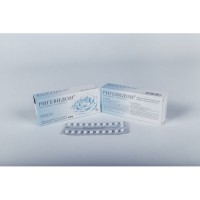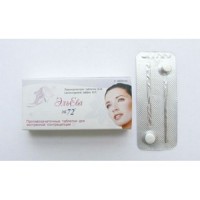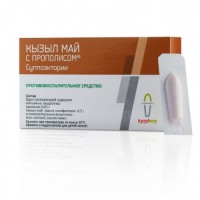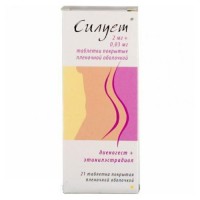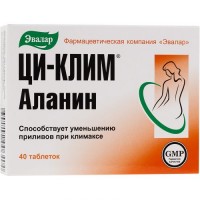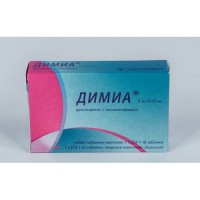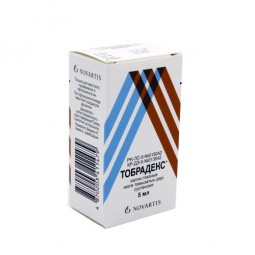Oxytocin Grindeks 5 IU / ml 10s solution for injection in ampoules
- $10.00
Out Of Stock
The instruction for medical use of GRINDEKS OXYTOCIN medicine the Trade name Oksitotsin Grindex the International unlicensed name Oxytocin Dosage Form Solution for injections of 5 ME/ml of 1 ml Structure of 1 ml of solution contains active agent – oxytocin 5 ME, excipients: chlorbutanolgidrat – 5 mg, 1 M of solution of acetic acid to pH 3.5-4.5, water for injections up to 1 ml. The description Transparent, colourless liquid with a characteristic smell. Pharmacotherapeutic group Hormones of a back share of a hypophysis. Oxytocin and its analogs. Oxytocin. ATX H01BB02 code the Pharmacological Pharmacokinetics At properties intravenous administration action of oxytocin comes immediately, the intensity and frequency of reductions of a uterus increases gradually within 15‑60 min. and then is stabilized. After the termination of intravenous infusion the effect of drug continues 20 more min., then the patrimonial uterine activity gradually decreases. Restoration of an initial condition of a uterus happens approximately in 40 min. At intramuscular introduction the effect is shown in 3-5 min. Restoration of an initial condition of a uterus happens approximately in 30-60 min. The period of semi-elimination (T1/2) of oxytocin is about 1‑6 minutes of blood plasma. Oxytocin does not contact proteins of blood plasma. Metabolism of oxytocin happens in a liver and kidneys. Drug is emitted from an organism in the form of metabolites and in small amounts in not changed look, generally with urine. The pharmacodynamics Oksitotsin is the synthetic hormone similar to natural peptide of a back share of a hypophysis. Oxytocin stimulates reduction of smooth muscles of a uterus. Under the influence of hormone the permeability of membranes for potassium ions increases, the membrane potential of cells goes down and their excitability increases. With reduction of membrane potential of cells the frequency, intensity and duration of reductions of myometrium increases. Oxytocin stimulates secretion of milk, strengthening production of lactogenic anterior pituitary hormone (prolactin). Oxytocin renders weak antidiuretic effect and in therapeutic doses significantly does not affect arterial blood pressure. Indications - stimulation of patrimonial activities for medical indications - as adjuvant therapy at incomplete or cancelled abortion at early stages of pregnancy - acceleration of postnatal involution of a uterus, a uterus atony, a stop of postnatal bleedings - strengthening of sokratitelny ability of a uterus at Cesarean section (after removal of an afterbirth) the Route of administration and doses For assessment of a condition of a placenta and a fruit and also possible complications to pregnant women with big risk carry out the test for shipping of oxytocin. For infusion oxytocin dilute sterile 5% of solution of glucose or 0.9% of solution of sodium of chloride in 500 ml. For stimulation of patrimonial activity of British National Formulary Nr. 42 recommends to dilute 10 ME oxytocins in 500 ml of solvent (rate of administering of 3 ml/h or 0.001 ME/min.), for receiving high doses 30 ME oxytocins dilute in 500 ml of solvent (rate of administering of 1 ml/h or 0.001 ME/min.). At an atony of a uterus and for stimulation of patrimonial activity oxytocin is usually entered intravenously in the form of drop infusion, using the infusional pump for ensuring exact rate of administering. Infusion is begun with a speed of 0.001-0.002 ME/min., then, observing at least a 30-minute interval, infusion speed is gradually increased before establishment of vigorous patrimonial activity – 3‑4 pains each 10 min. For titration of a dose control a heart rhythm of a fruit and reduction of a uterus (oxytocin cannot be entered in the form of injection bolus). In a hypoxia of a fruit and hyperactivity of a uterus the infusion of oxytocin should be stopped immediately. Consider that the rate of administering of 0.006 ME/min. provides concentration of oxytocin in blood plasma which corresponds to its level at natural childbirth. Usually necessary rate of administering corresponds to 0.012 ME/min., but is most often applied up to 0.02 ME/min. and more. British National Formulary Nr edition. 42 recommends the maximum rate of administering of 0.032 ME/min., the maximum day dose makes 5 ME. At achievement of necessary patrimonial activity the infusion speed is gradually reduced. At Cesarean section (after removal of an afterbirth) enter intravenously slowly 5 ME oxytocins at once. For prevention of hypotonic uterine bleedings (after an afterbirth exit) 5 ME oxytocins enter slowly intravenously, for the termination of bleedings – 5-10 ME, in more hard cases enter 5‑30 ME in the form of infusion with a speed which prevents a uterus atony. Intravenous administration of oxytocin with high speed causes rapid lowering of arterial pressure. Prolonged use is undesirable (see the section Special instructions). An alternative way of introduction for treatment of hypotonic uterine bleedings: on 5-8 ME 2-3 times a day within 3 days intramusculary. At incomplete or cancelled abortion 5 ME oxytocins enter slowly intravenously if it is necessary, enter in the form of infusion with a speed – 0.02-0.04 ME/min. or more. Side effects At mother: - uterus spasms (also at use of small doses) - a uterus hyper tone, tetanic reductions, hyperactivity of a uterus with a rupture of a uterus and tissues of a vagina at hypersensitivity of a uterus and high doses of oxytocin - water intoxication with a fluid lungs, spasms, a coma, a hyponatremia and even death at infusion of large volumes of solutions of nonelectrolytes - nausea, vomiting, tachycardia, bradycardia, arrhythmias, rash, anaphylactoid and allergic reactions (the complicated breath, hypotension or shock) - heavy hypertensia can become the reason of a lethal outcome, subarachnoidal bleeding - a life-threatening afibrinogenemiya and postnatal bleeding in case of complications of pregnancy and childbirth - acute short-term hypotension with erubescence and reflex tachycardia at intravenous administration of oxytocin with high speed - in the doses exceeding 5 ME/min., oxytocin can cause short-term ischemia of a myocardium, a depression of an interval of ST and change of an interval of QT U of a fruit and the newborn: - bradycardia, arrhythmias, asphyxia, an acute hypoxia, a lethal outcome - jaundice, hemorrhages in a retina at newborns, injury of a brain of the Contraindication - hypersensitivity to oxytocin or to any auxiliary component of drug - hypertensive reductions of a uterus - a fruit hypoxia - discrepancy of the sizes of a fruit and a basin - diagnostically the installed boundary narrow basin - the cross and slanting provision of a fruit - placental presentation - vasa previa – arrangement of vessels of a fruit is lower than its prelying part, i.e., on the way of the born fruit - premature placental detachment - an umbilical cord prolapse - threat of a hysterorrhesis because of a large number of pregnancies - gidramnion - a large number of pregnancies and postoperative hems on a uterus wall, including after Cesarean section - a preeklampsichesky toxaemia - a serious illness of a cardiovascular system - inertness of a uterus (resistance to oxytocin) - a nephropathy - premature births Medicinal interactions Inhalation of anesthetics, perhaps, reduces action of oxytocin (and also increases hypotensive effect and risk of arrhythmia). Oxytocin is not applied during 6 h after vaginal administration of prostaglandins (prostaglandins enhance uterotonichesky effect). Simultaneous use of oxytocin and sympathomimetic vasoconstrictors increases angiotonic action. β-adrenomimetik reduce efficiency of oxytocin. The special instructions Induction of Childbirth by means of oxytocin it has to be carried out on strict medical indications only in a hospital, under careful observation of the qualified specialist. Oxytocin should be entered intravenously only in the form of drop infusion, excepting intravenous jet administration, precisely observing the speed of infusion and it is regular it controlling. During use of oxytocin it is necessary to control sokratitelny activity of a uterus (frequency, force and duration of reductions), heartbeat of a fruit, arterial blood pressure and the general condition of the patient. The extra care should be observed at: · risk of discrepancy of the sizes of a fruit and a basin (at great risk it is necessary to avoid use of oxytocin) · moderate or moderate severity of hypertensia owing to pregnancy and in heart diseases · approach of pregnancy after 35 years · existence in the anamnesis of Cesarean section in the lower segment of a uterus in case of death of a fruit in a uterus and/or presence of the amniotic liquid painted by meconium, it is necessary to avoid rapid childbirth as it can cause an embolism amniotic liquid. In rare instances of pharmacological induction of childbirth by means of uterotonichesky means postnatal DVSsindrom's risk (disseminate intravascular coagulation) increases. Pharmacological induction of childbirth in itself, but not specific substance, is connected with such risk. The risk increases especially if the woman has accessory factors of risk of DVS, such as age of 35 years and more, complications during pregnancy and duration of gestation over 40 weeks. Such women have oxytocin and other alternative drugs have to be used with care and the practicing personnel have to be warned about signs of DVS. In case of water intoxication and a hyponatremia it is necessary to avoid introduction of large volumes of liquid, besides the patient should limit intake of liquid. The effect of oxytocin amplifies at simultaneous use of prostaglandins (very careful control is necessary) and also owing to epidural anesthesia (hypertensive action of sympathomimetic angiotonic means can amplify). If prolonged use of oxytocin is necessary, it is necessary to reduce the volume of infusion solution and to apply the solutions containing electrolytes, but not glucose (risk of water intoxication, cm. Side effects). At suspicion on disturbance of electrolytic balance determine the content of electrolytes in blood serum. It is necessary to avoid fast intravenous administration at prevention or treatment of uterine bleedings as it can cause the sharp short-term falling of arterial blood pressure which is followed by reflex tachycardia. In order to avoid development of a depression of an interval of ST and change of an interval of QT the use of lower doses of oxytocin (2‑5 ME/min.) and reduction of speed of its introduction is recommended. With extra care oxytocin is applied at women with the changed QT interval. Pregnancy and the period of a lactation Because of increase in risk of complications to mother and a fruit during pregnancy apply oxytocin carefully. In very small amounts oxytocin gets into milk of mother, complications for people are not described. The feature of influence of medicine on ability to run vehicles and potentially dangerous mechanisms does not matter, considering specific indications of oxytocin. Overdose Symptoms: at overdose there can be a peeling of a placenta, an embolism amniotic waters, hyperactivity of a uterus, hypertensive and tetanic reductions. The rupture of a uterus, neck of the uterus and vagina, heavy postnatal bleedings, disturbances of warm activity at a fruit can result, the hypoxia and even to come death. The effects connected with antidiuretic effect of drug are possible. Treatment: to immediately stop administration of drug, it is necessary to restore a normal diuresis, to enter symptomatic means and hypertonic saline solutions. Antidote is unknown. A form of release and packing Solution for injections of 5 ME/ml on 1 ml. On 1 ml of drug in an ampoule from colourless glass I of a hydrolytic class with the line or a point of a break and one marking ring of blue-green color. On 5 ampoules place in blister strip packaging from a film polyvinylchloride. On the 2nd blister strip packagings together with the instruction for medical use in the state and Russian languages place in a pack from cardboard. To Store storage conditions at a temperature not above 25 ºC. Not to freeze! To store out of children's reach! 3 years not to apply a period of storage after an expiration date. Prescription status According to the prescription HBM Producer of Pharm of neuter of the lake, st. of Sklabinsk, 30, Martin, 036 80, Slovakia the Owner of the registration certificate of JSC Grindex, Krustpils St., 53, Riga, LV-1057, Latvia the Address of the organization accepting in the territory of the Republic of Kazakhstan claims from consumers on quality of the products responsible for post-registration observation of safety of medicine Representative office of JSC Grindex 050010, Almaty, Dostyk Ave., a corner of Bogenbay St. of the batyr, 34a/87a, office No. of 1 t. / f. 291-88-77, 291-13-84
To develop
To develop
